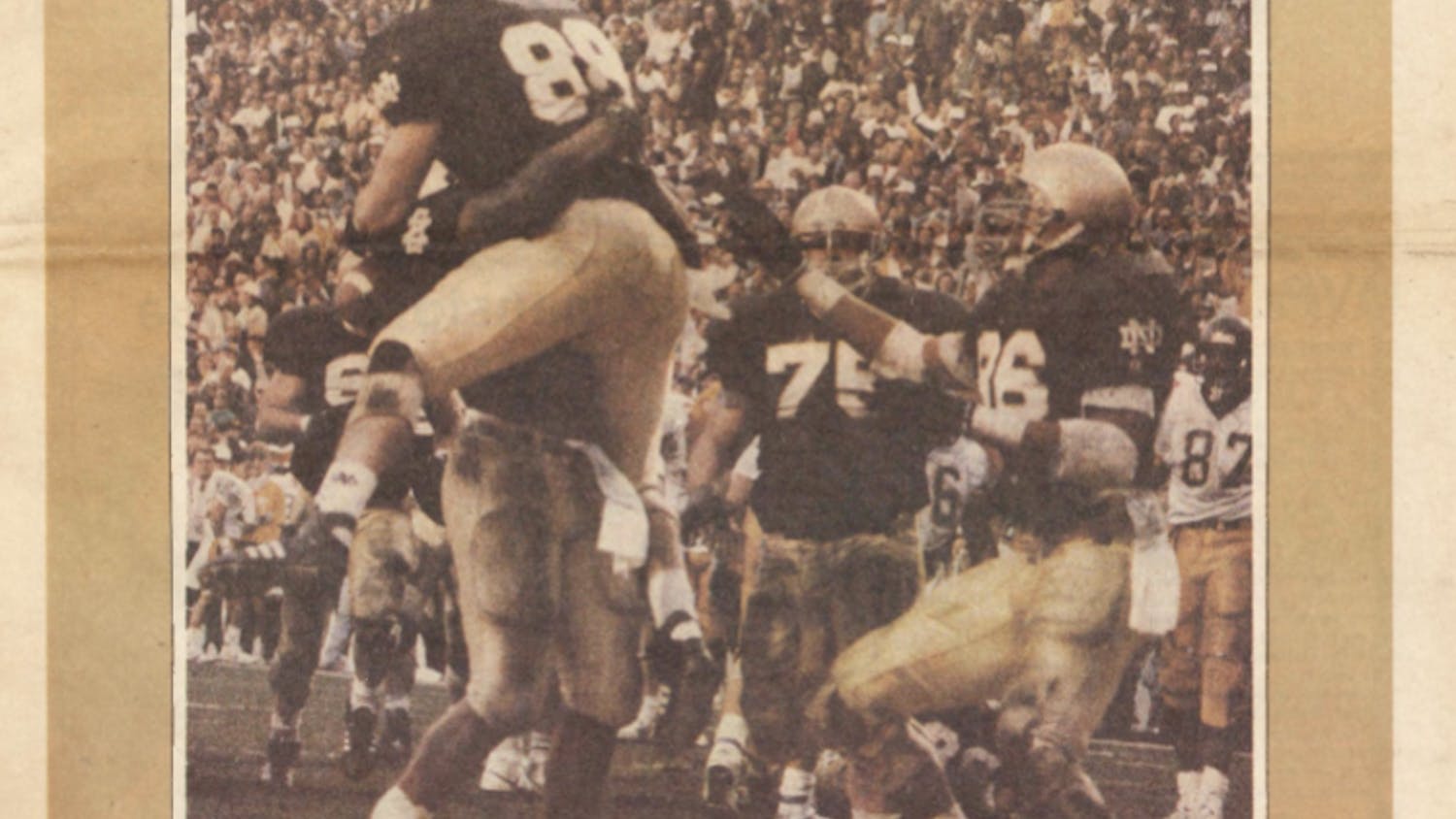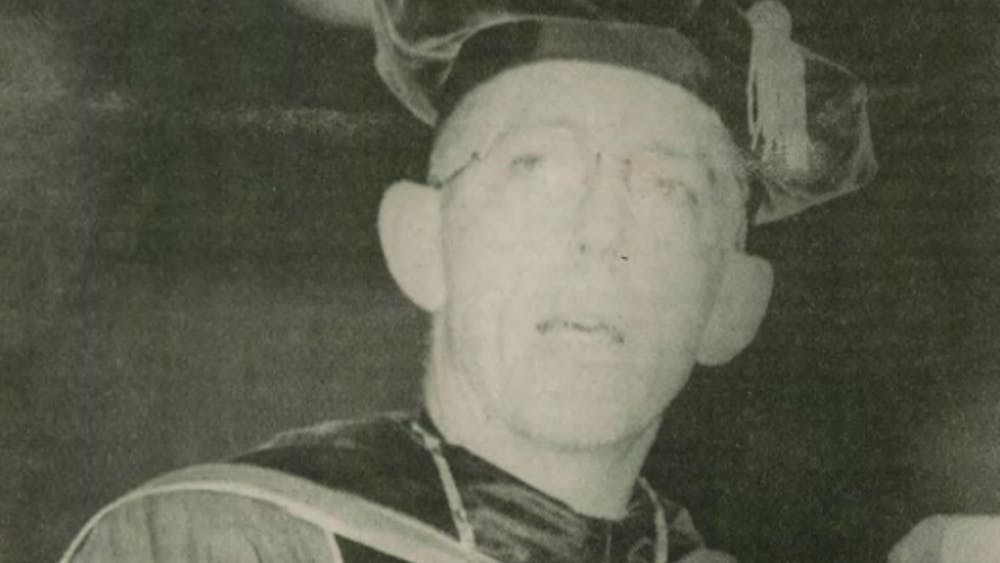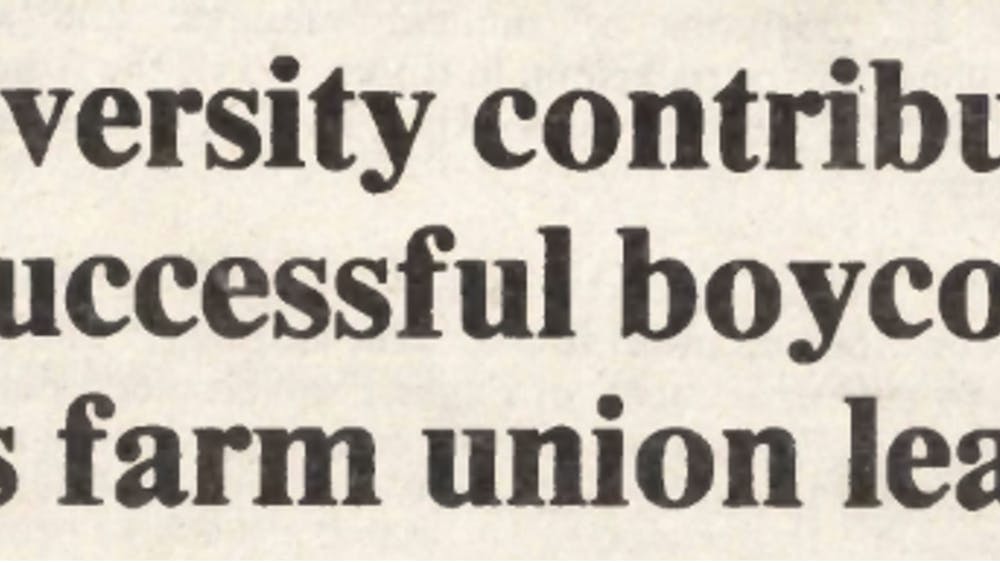
Diane Park | The Observer
Craving a bucket of spaghetti?
Dec. 1, 1999 | Researched by Evan McKenna
 Picture this: it’s a Thursday night in December 1999. Finals week at Notre Dame is quickly approaching, and you and your three friends desperately need a study snack. Suddenly, you see it — the (now-closed) PJ’s Deli is serving its famous “homemade Italian spaghetti” at a bargain price: $6 per bucket! What a perfect way to spend a stressful night: diving into a bucket of spaghetti from PJ’s. You call ahead, grab your meal, and hunker down for a delicious night of studying.
Picture this: it’s a Thursday night in December 1999. Finals week at Notre Dame is quickly approaching, and you and your three friends desperately need a study snack. Suddenly, you see it — the (now-closed) PJ’s Deli is serving its famous “homemade Italian spaghetti” at a bargain price: $6 per bucket! What a perfect way to spend a stressful night: diving into a bucket of spaghetti from PJ’s. You call ahead, grab your meal, and hunker down for a delicious night of studying.
Walk your troubles away through the Walkaway program
Sept. 14, 1990| Researched by Meg Pryor
 Have you ever wanted to literally walk away from your problems? Do you want to stroll across the quad and take in the beauty of Mother Nature? Apparently, in 1990, there was a club on campus for people to do exactly that. Walkaway was a program started by theDepartment of Non-Varsity Athletics (NVA) that met twice a week. No need to worry — the walks were always at a moderate pace. Oh, and don’t forget your “good walking shoes.”
Have you ever wanted to literally walk away from your problems? Do you want to stroll across the quad and take in the beauty of Mother Nature? Apparently, in 1990, there was a club on campus for people to do exactly that. Walkaway was a program started by theDepartment of Non-Varsity Athletics (NVA) that met twice a week. No need to worry — the walks were always at a moderate pace. Oh, and don’t forget your “good walking shoes.”
X-Drive makes group projects more bearable
Dec. 1, 1999 | Researched by Erin Fennessy
 In our technology-driven modern world, it’s hard to imagine group projects without the phrase, “I’ll share the Google Doc with you.” In the Internet’s early days, however, most students still relied on paper or floppy disks to transfer information amongst group members. In 1999, the new X-Drive was advertised to Notre Dame students as a tool to “keep track of the slugs in your study group.” X-Drive was an online hard drive to store files and track edits by other users. No more “[opening] a vein” after losing notes. Group work is hard: X-Drive was there to help.
In our technology-driven modern world, it’s hard to imagine group projects without the phrase, “I’ll share the Google Doc with you.” In the Internet’s early days, however, most students still relied on paper or floppy disks to transfer information amongst group members. In 1999, the new X-Drive was advertised to Notre Dame students as a tool to “keep track of the slugs in your study group.” X-Drive was an online hard drive to store files and track edits by other users. No more “[opening] a vein” after losing notes. Group work is hard: X-Drive was there to help.
The iBook comes to Notre Dame
Nov. 23, 1999 | Researched by Marirose Osborne
 Apple’s first attempt at a laptop computer was the iBook. The iBook was the first mass consumer product to automatically connect to WiFi, making it state-of-the-art technology in 1999. According to Apple, the iBook apparently served as a new ND institution alongside the Dome, the Grotto, and the Stadium. Of course, the iBook was manufactured until 2006 and these other sites are still around. Then again, MacBooks are ubiquitous on campus today — and they owe their start to the original clunky clamshell.
Apple’s first attempt at a laptop computer was the iBook. The iBook was the first mass consumer product to automatically connect to WiFi, making it state-of-the-art technology in 1999. According to Apple, the iBook apparently served as a new ND institution alongside the Dome, the Grotto, and the Stadium. Of course, the iBook was manufactured until 2006 and these other sites are still around. Then again, MacBooks are ubiquitous on campus today — and they owe their start to the original clunky clamshell.
LaFun basement becomes a 24-hour space
Jan. 23, 1991 | Researched by Erin Fennessy

LaFun’s basement booths are filled with students at all hours of the day and night. Foodies congregate at TacoHut. Billiard balls collide on the pool table. The fun at LaFun does “last all night,” as it has (almost) every night since January of 1991. Although the films “Rebel Without a Cause” and “Fletch” are missing from the scene today, the 24/7 availability of the basement of this beloved building continues.
Jeweler targets “ring by spring” market
Dec. 8, 1966 | Researched by Sarah Kikel
Can you imagine the horror of being so enamored with your beloved that you forget to buy them a ring? In an attempt to prevent this, Jacobs Jewelers offers valuable advice: “forget about love when you’re buying a diamond ring.” Emotions would only impede your rational decision to trust your local jeweler’s renowned expertise in diamonds. The rings of his acclaimed collection range from $150 to over $1000. But don’t even consider choosing a ring based on your affection for your loved one. Hand over all control to Jacobs Jewelers today — spring is quickly approaching.Wildfire prevention
Jan. 31, 2000 | Researched by Adriana Perez
 This curious public service ad draws many questions, especially in regards to the Russells. Why exactly does the ad center around their silverware? Granted, the family’s tragedy might just be a fictitious cautionary tale. But the ad also offers complicated suggestions about what “careful behavior” entails. Should the public stay clear of forests altogether? Would only that prevent wildfires?Presently, wildfires are growing stronger, lasting longer and becoming hotter due to climate change, according to a Nov. 21 New York Times article. Firefighting assistance is in great demand and its costs are soaring. According to a report on federal firefighting expenses, the Forest Service has spent approximately $23.6 billion on fire management between 2000 and 2018. The yearly average spending is over $1 billion, and in the last two years alone, the annual costs have been more than $2 billion.About 90 percent of wildfires are caused by humans: unattended campfires, debris burning, cigarettes and arson. Reduced human activity in or near forests is one of the few ways we all can help.
This curious public service ad draws many questions, especially in regards to the Russells. Why exactly does the ad center around their silverware? Granted, the family’s tragedy might just be a fictitious cautionary tale. But the ad also offers complicated suggestions about what “careful behavior” entails. Should the public stay clear of forests altogether? Would only that prevent wildfires?Presently, wildfires are growing stronger, lasting longer and becoming hotter due to climate change, according to a Nov. 21 New York Times article. Firefighting assistance is in great demand and its costs are soaring. According to a report on federal firefighting expenses, the Forest Service has spent approximately $23.6 billion on fire management between 2000 and 2018. The yearly average spending is over $1 billion, and in the last two years alone, the annual costs have been more than $2 billion.About 90 percent of wildfires are caused by humans: unattended campfires, debris burning, cigarettes and arson. Reduced human activity in or near forests is one of the few ways we all can help.









